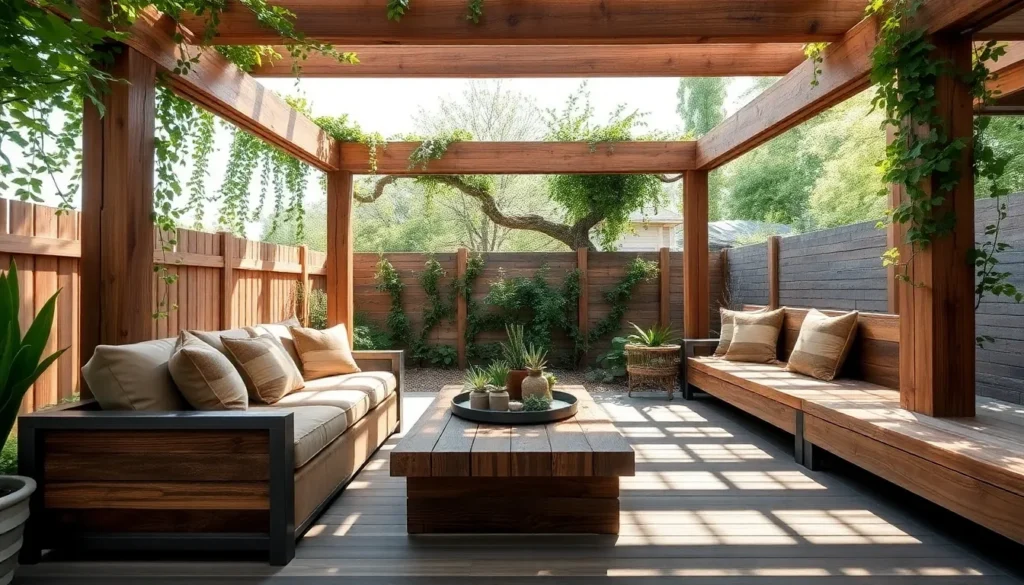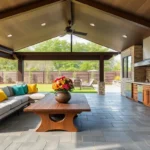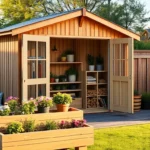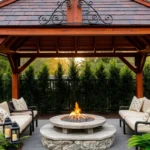Imagine stepping into your backyard oasis, where every structure not only enhances its beauty but also respects the environment. Whether you’re just starting your outdoor journey or you’re a seasoned pro, “12 Sustainable Outdoor Shelter Ideas for Eco-Friendly Yards” is your gateway to creating a harmonious, earth-friendly retreat. This guide is packed with innovative ideas that promise both style and sustainability, ensuring your outdoor space becomes a sanctuary for you and a haven for nature.
From whimsical pergolas to cozy greenhouses, each idea is designed to inspire and empower you to make eco-conscious choices. You’ll discover practical benefits like reduced environmental impact and increased energy efficiency, all while elevating the charm of your yard. So, let’s embark on this exciting transformation together and unlock the potential of your outdoor living space with confidence and joy!
Use Reclaimed Wood for Structures
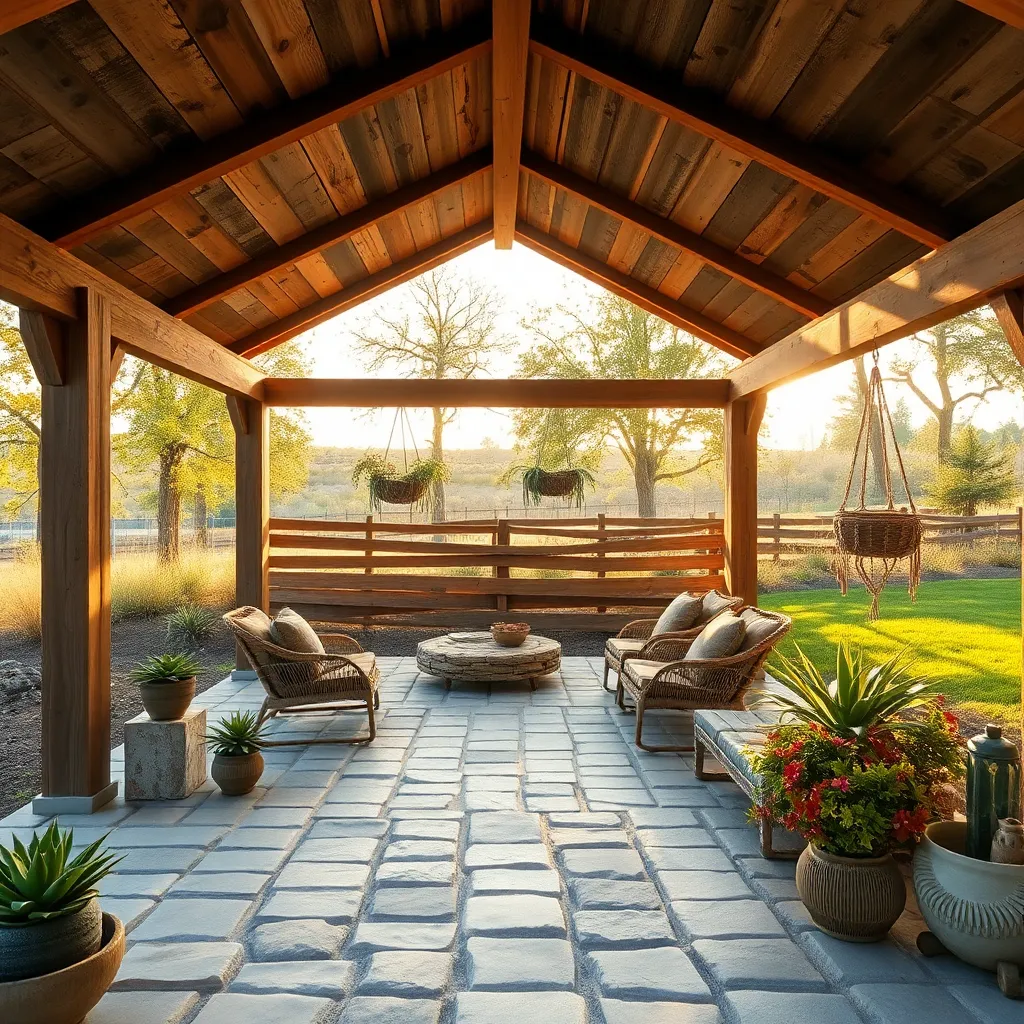
Transform your yard with a sustainable touch by using reclaimed wood for building outdoor shelters. This eco-friendly approach not only reduces waste but also adds a rustic charm to your garden. Start by sourcing wood from old barns, pallets, or even shipping crates, ensuring it’s free from rot and pests. For beginners, a simple pergola can be constructed using 4×4 reclaimed posts as pillars and 2×6 beams to create a shaded retreat. Sand the wood to prevent splinters and treat it with a natural oil finish to enhance durability and weather resistance.
For those with a knack for more detailed projects, consider crafting a cozy gazebo or a potting shed using reclaimed wood. Incorporate design elements like cross-bracing for added stability and aesthetic appeal. Ensure all joints are securely fastened with galvanized screws to withstand outdoor conditions. Advanced builders can experiment with intricate lattice designs or integrate built-in seating using repurposed planks. By embracing these sustainable materials, you can create a functional and attractive outdoor space that aligns with eco-conscious values.
Incorporate Living Green Roofs
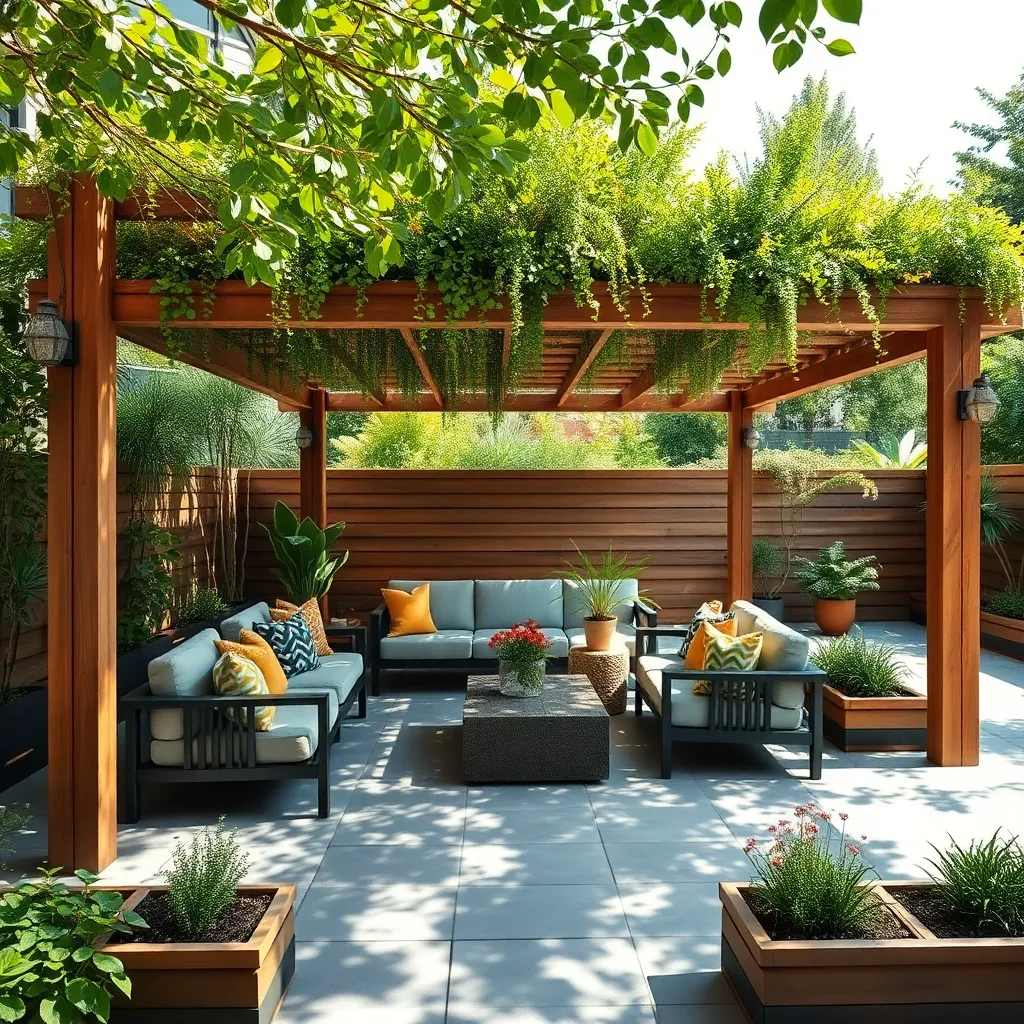
Transform your outdoor shelter by incorporating a living green roof to create a stunning, eco-friendly feature. Begin by selecting a structure with a sturdy, flat or slightly pitched roof that can support the weight of a green roof system. Use lightweight materials such as sedum, moss, and drought-resistant grasses, which require minimal maintenance and thrive in various climates. To get started, install a waterproof membrane, followed by a drainage layer to prevent waterlogging.
For those seeking advanced tips, consider adding solar panels alongside your green roof to enhance sustainability. Ensure your shelter has proper structural support by consulting with a structural engineer, especially for larger installations. Keep maintenance simple with an irrigation system or by selecting self-sustaining plant varieties. By merging nature with architecture, you’ll cultivate a beautiful, functional space that supports biodiversity and improves insulation.
Opt for Solar-Powered Lighting
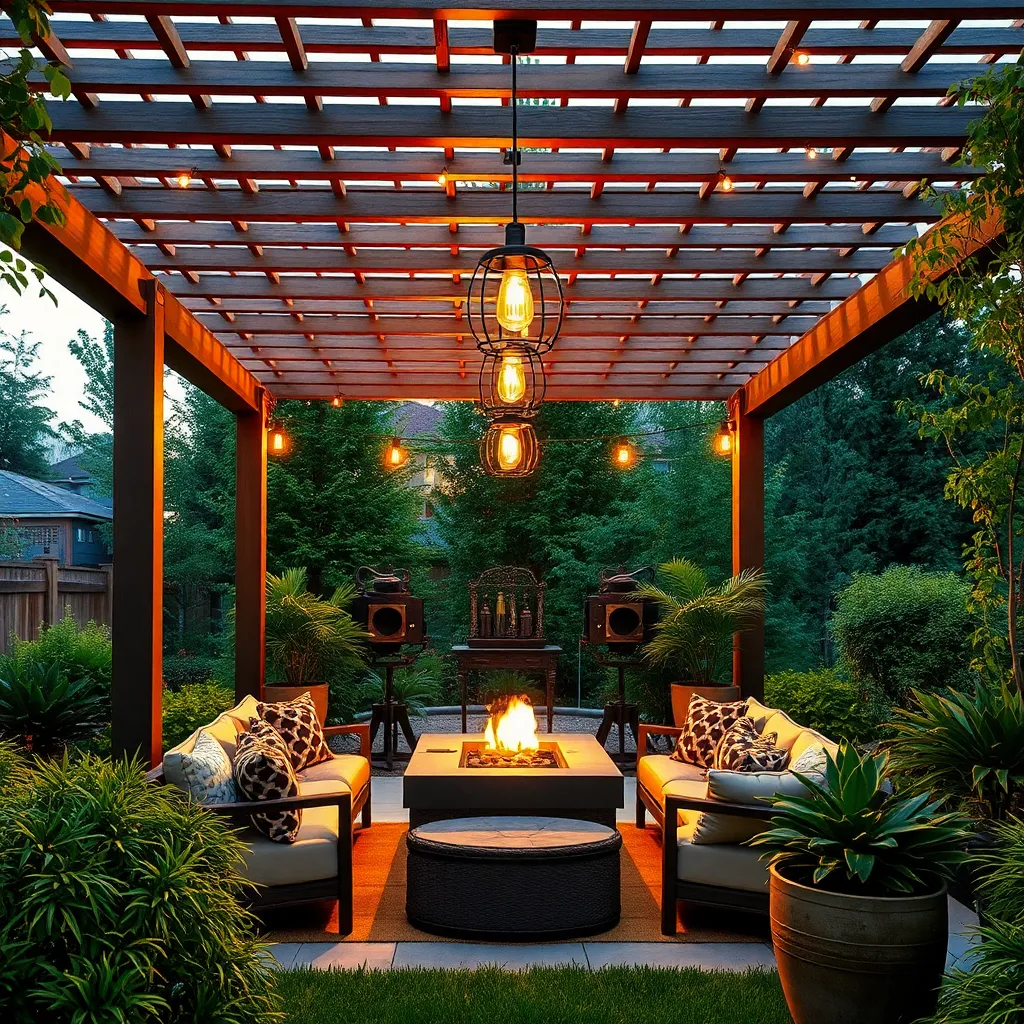
To enhance your outdoor shelter with sustainable features, consider installing solar-powered lighting. These lights harness sunlight during the day and provide illumination after dusk, reducing energy consumption and lowering utility bills. For beginners, start with simple solar stake lights along pathways or around the perimeter of your shelter. Ensure they receive ample sunlight throughout the day for optimal performance.
For a more advanced setup, integrate solar panels on the roof of your shelter to power LED string lights or lanterns. Choose fixtures with durable, weather-resistant materials like stainless steel or heavy-duty plastic to withstand outdoor conditions. To maximize efficiency, position the panels at an angle that captures maximum sunlight, which may vary based on your location. This approach not only brightens your space but also adds a charming ambiance to your eco-friendly yard.
Create Natural Shade with Trees
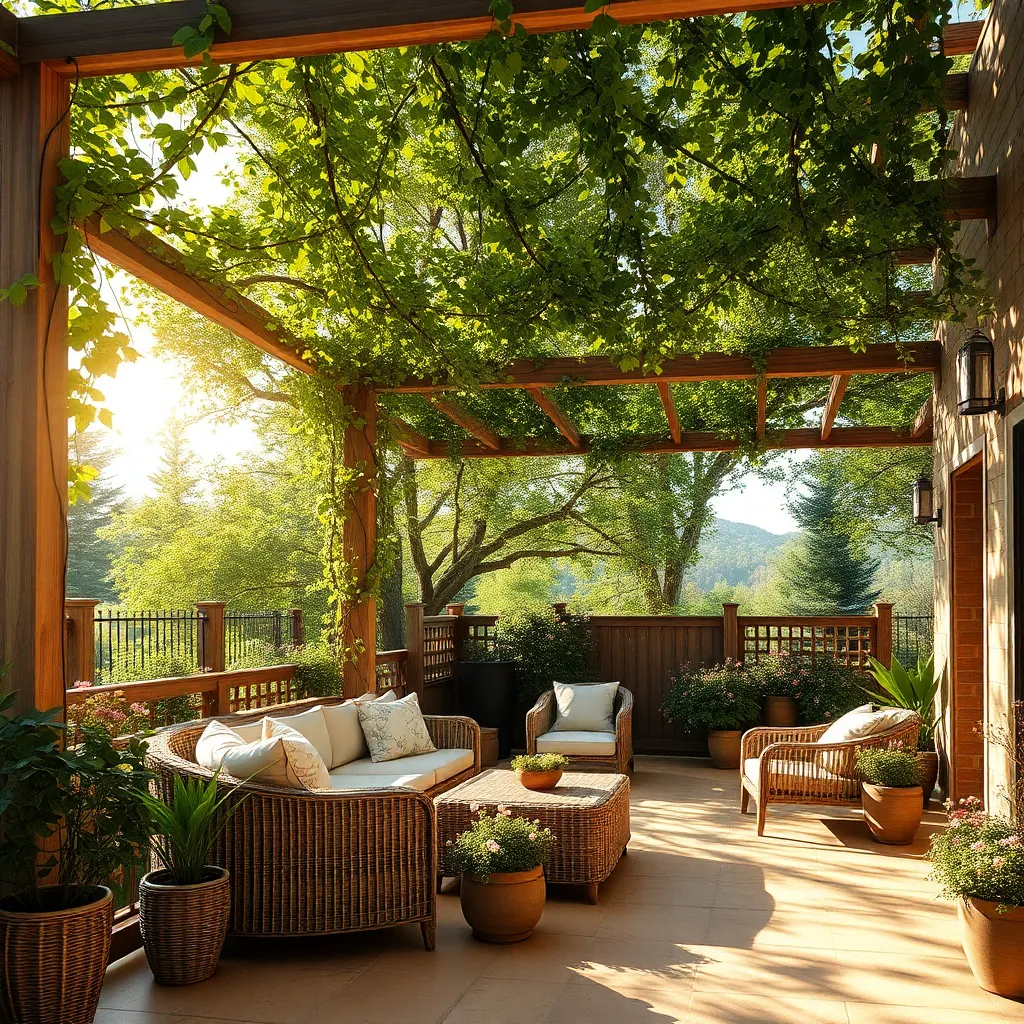
One of the most sustainable ways to create shade in your yard is by planting trees strategically. Choose native species that are well-suited to your climate, as they are more resilient and require less maintenance. Consider fast-growing options like poplars or willows for quicker results, or opt for oaks or maples if you’re looking for longevity and robust shade. Ensure you plant them at least 10 to 20 feet from your house to prevent root interference with foundations, and position them where they will block the harshest midday sun.
For a more immediate impact, incorporate trees with expansive canopies such as the sycamore or the tulip tree, which can provide ample coverage once matured. To enhance your design, integrate a mix of evergreen and deciduous trees for year-round shade and visual interest. Beginners should start with smaller saplings that are easier to manage, while seasoned gardeners might explore creating layered plantings with shrubs and understory trees for a lush, multi-tiered effect. Remember, nurturing these trees with adequate water and mulch will ensure they thrive and offer natural shade for years to come.
Build with Bamboo Materials
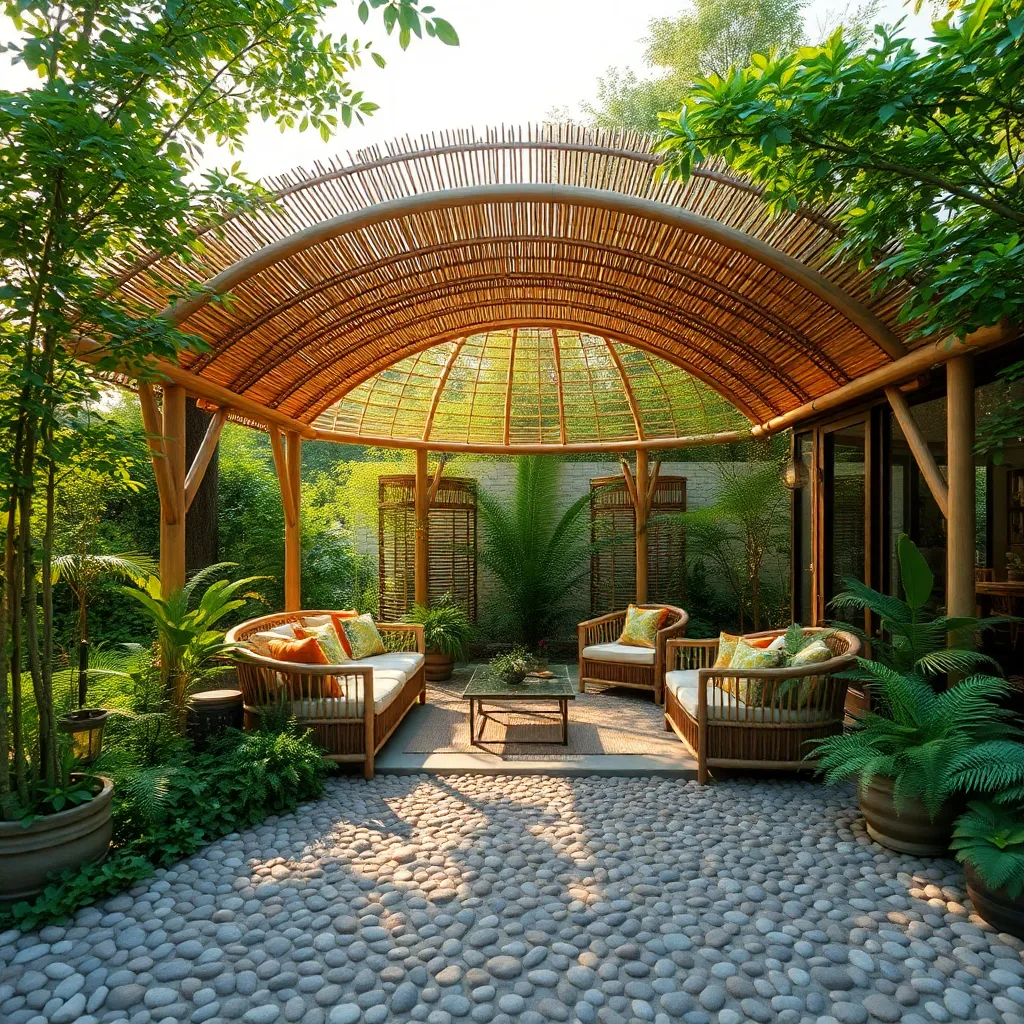
Bamboo is an excellent material for building sustainable outdoor shelters due to its rapid growth and strength. To create a basic bamboo pergola, start by selecting sturdy bamboo poles, ideally between 2 to 4 inches in diameter and cut to your desired height, typically around 8 to 10 feet. Secure the poles into the ground using metal stakes or cement for stability. For the roof, use thinner bamboo canes tied together with natural fiber ropes to form a lattice that provides both shade and a stylish, eco-friendly look.
For a more advanced design, consider incorporating bamboo panels or mats for added privacy or wind protection. These can be attached to the sides of your structure using zip ties or wire, making them easy to remove or replace. To ensure longevity, treat the bamboo with a natural sealant to protect against weathering. Remember to plan your shelter’s location to maximize natural shade and airflow, enhancing comfort while maintaining an environmental focus.
Design Using Recycled Metal
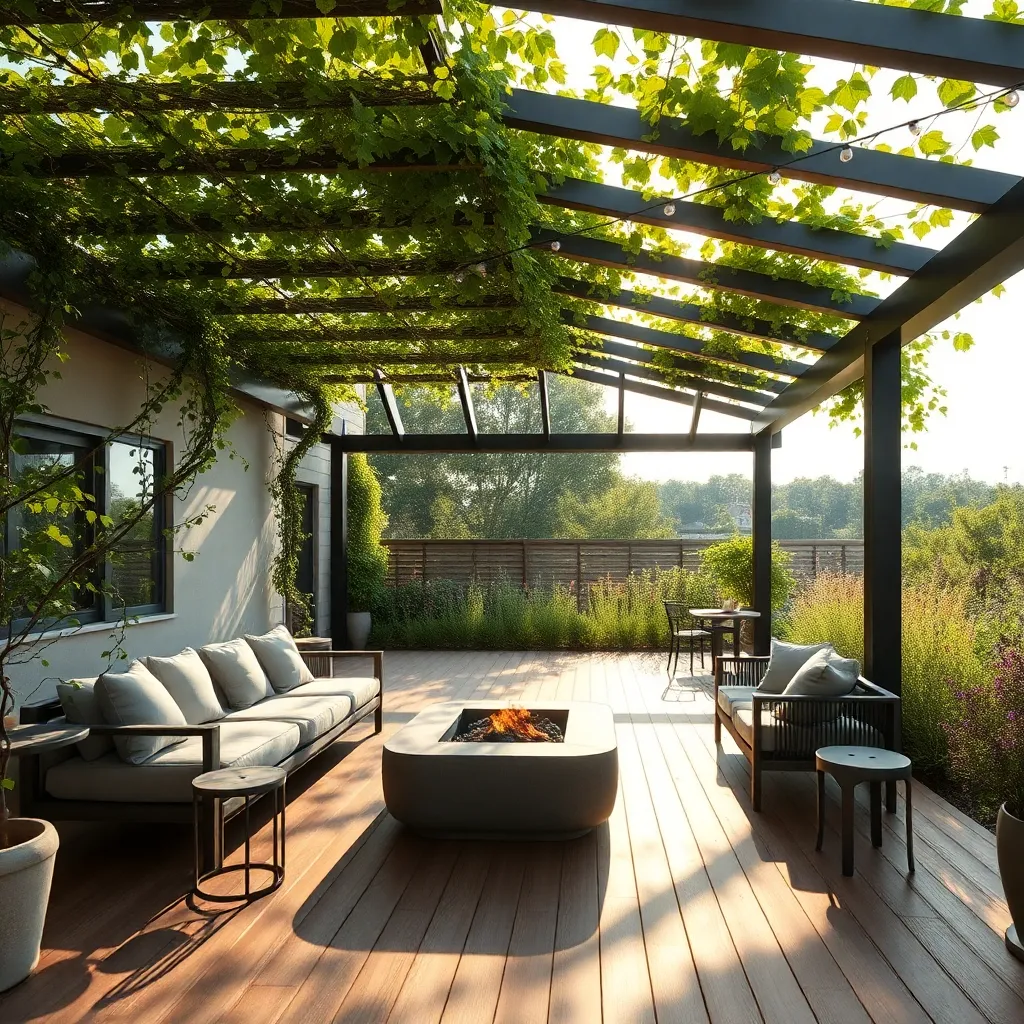
Embracing the use of recycled metal for outdoor shelters not only adds a modern twist to your garden but also promotes sustainability. Consider repurposing materials like galvanized steel, corrugated metal sheets, or old metal roofing, which are both durable and weather-resistant. For a basic project, use these recycled materials to construct a simple, robust pergola or gazebo frame. Ensure you treat the metal to prevent rust, and use a mix of metal fasteners and sturdy brackets for a secure assembly.
For those with a knack for design, incorporating recycled metal can add an artistic flair to your outdoor space. Create eye-catching trellises using metal rods or craft intricate shelter walls with creatively cut aluminum sheets. Consider adding a green roof to your metal structure for enhanced insulation and biodiversity. When working with metal, remember to wear protective gloves and use appropriate tools like metal snips or a grinder for precise cuts. These elements can transform your yard into a chic, eco-friendly retreat, while providing a functional and stylish shelter space.
Install Rainwater Collection Systems
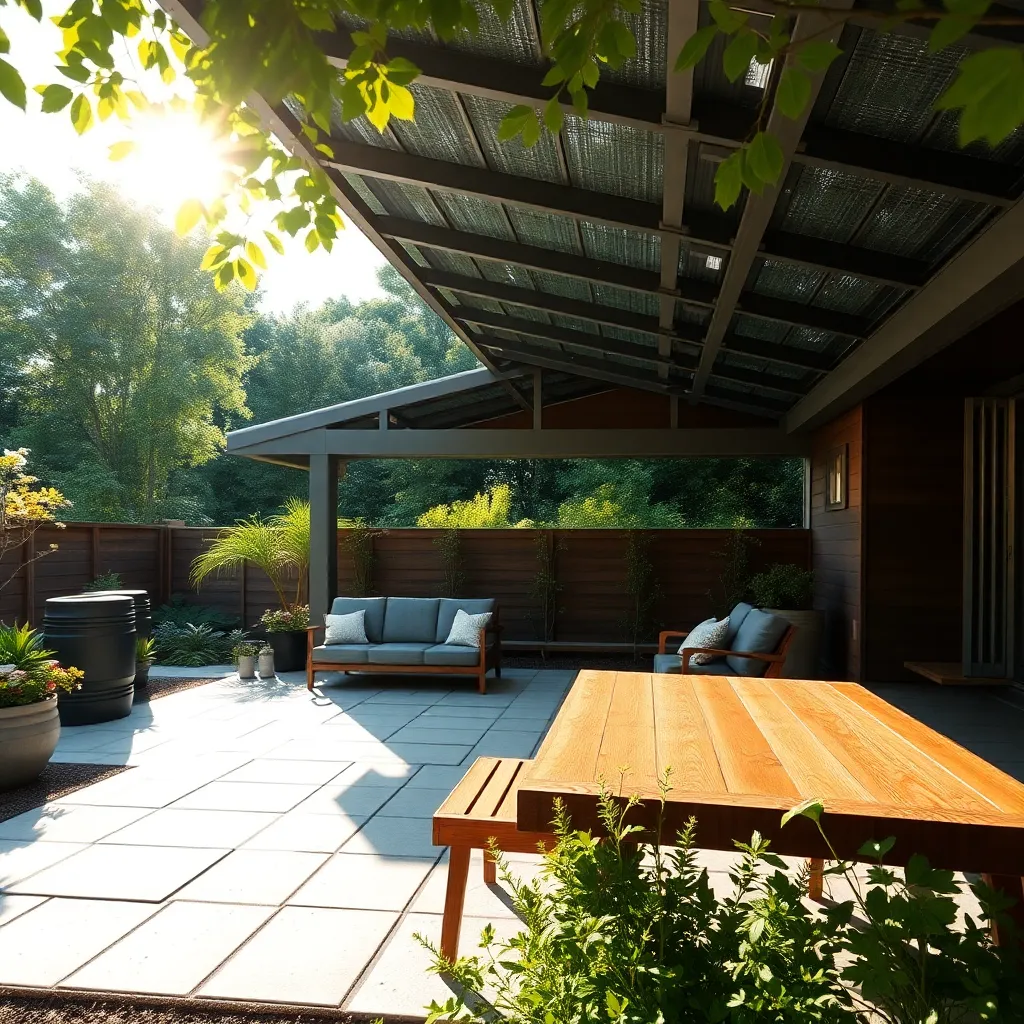
Consider installing a rainwater collection system to make your outdoor shelter even more sustainable. This eco-friendly addition can be as simple as attaching a gutter to your shelter’s roof that directs water into a barrel. Choose durable materials like stainless steel for long-lasting gutters, and ensure your rain barrel has a spigot for easy water access. This setup not only conserves water but also reduces your utility bills and provides a natural source of irrigation for your garden.
For those ready to take on a more advanced project, integrate a first flush diverter system. This component helps to remove debris and contaminants from the initial flow of rain, ensuring cleaner water collection. Position your rain barrels on a sturdy platform to elevate them, which increases water pressure and efficiency when watering your plants. Whether you’re a beginner or an experienced gardener, a rainwater collection system is a practical enhancement to any outdoor shelter, supporting both sustainability and self-sufficiency.
Choose Permeable Paving Options
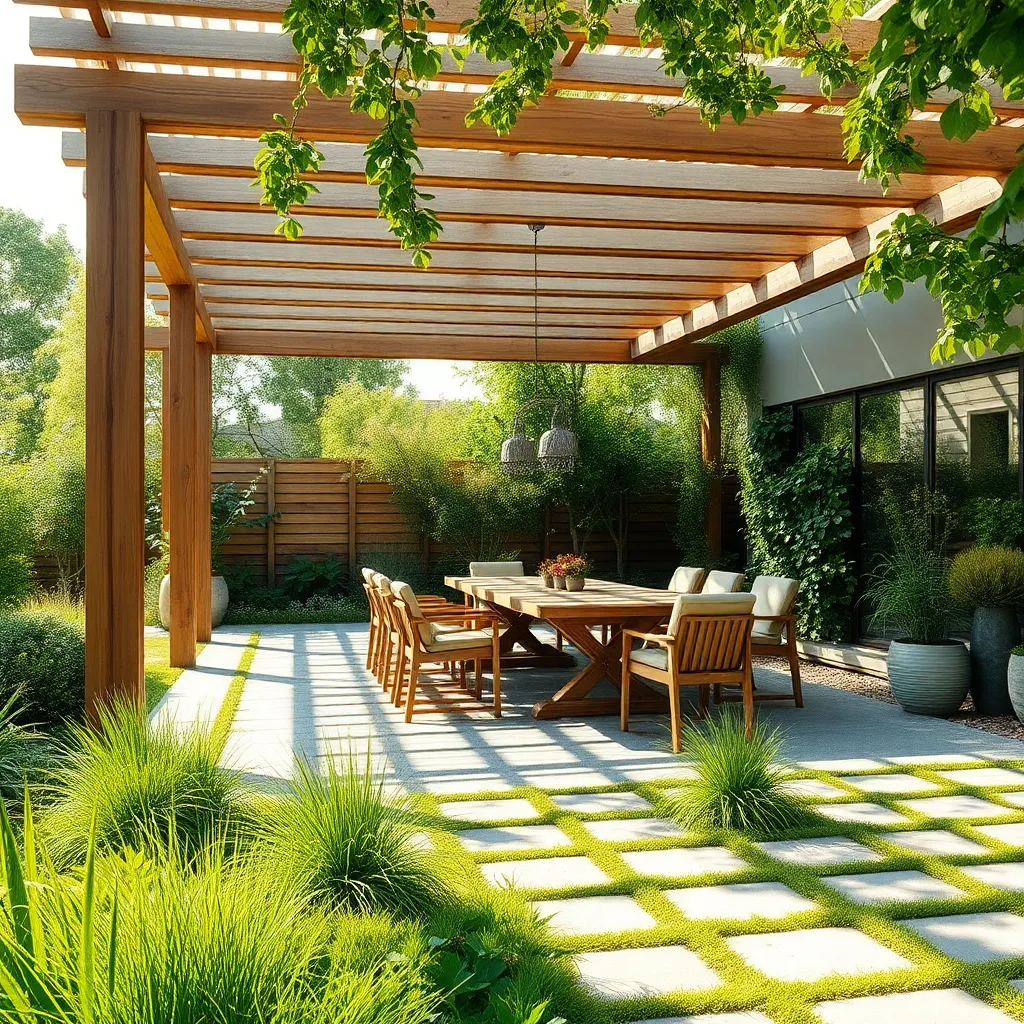
When planning your eco-friendly yard, opting for permeable paving can significantly enhance sustainability. Instead of typical concrete or asphalt, consider materials such as gravel, permeable pavers, or porous asphalt that allow rainwater to seep through, reducing runoff and recharging groundwater. For beginners, a simple gravel path is an easy project, while more advanced gardeners might explore interlocking paver systems that combine strength with permeability.
Incorporating permeable paving isn’t just about the material; it’s also about design and placement. Consider pathways that flow with the natural terrain, minimizing disruption to existing vegetation. For optimal effectiveness, install a base layer of crushed stone beneath your permeable surface to enhance drainage. To ensure your paving project is sustainable, choose locally sourced materials when possible, reducing environmental impact while supporting local businesses.
Add Vertical Gardens to Walls
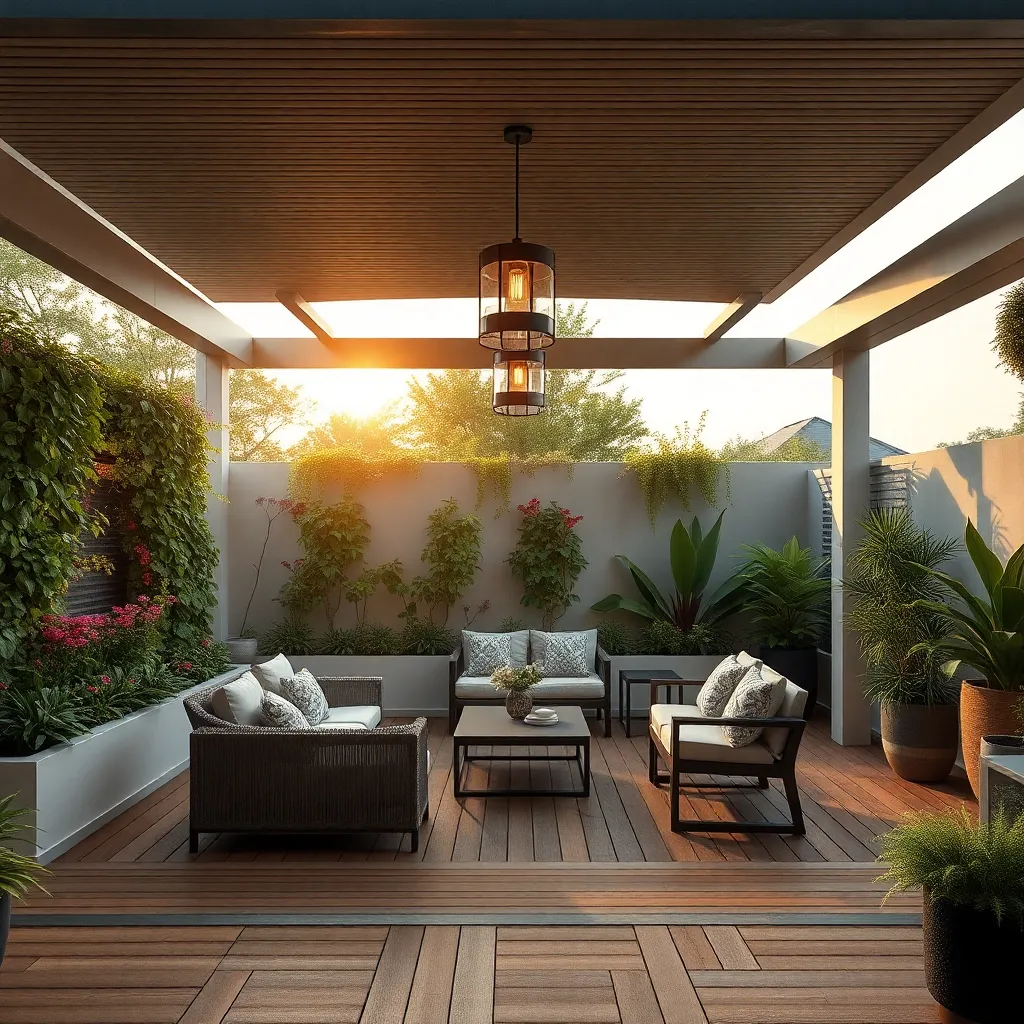
Transform bare walls into lush, living landscapes by adding vertical gardens. These are perfect for small yards or to enhance larger spaces with greenery. Start by selecting a suitable wall that receives the right amount of sunlight for your chosen plants. Use materials like modular panels, pocket systems, or trellis designs for easy installation. Ensure your wall can support the weight of the garden by using appropriate anchors or brackets. For beginners, succulents and herbs are low-maintenance options, while experienced gardeners might try flowering vines or even small vegetables.
To maintain your vertical garden, consider installing a drip irrigation system, which is both water-efficient and convenient. Choose a soil mix that retains moisture but doesn’t become waterlogged, such as a blend of peat, vermiculite, and perlite. Regularly check for pests and diseases, especially in densely planted areas. For a creative touch, mix different textures and colors to add visual interest to your wall. Whether you’re an urban gardener with limited space or a homeowner looking to add a unique design element, vertical gardens offer a sustainable and beautiful solution.
Construct with Earth-Friendly Concrete
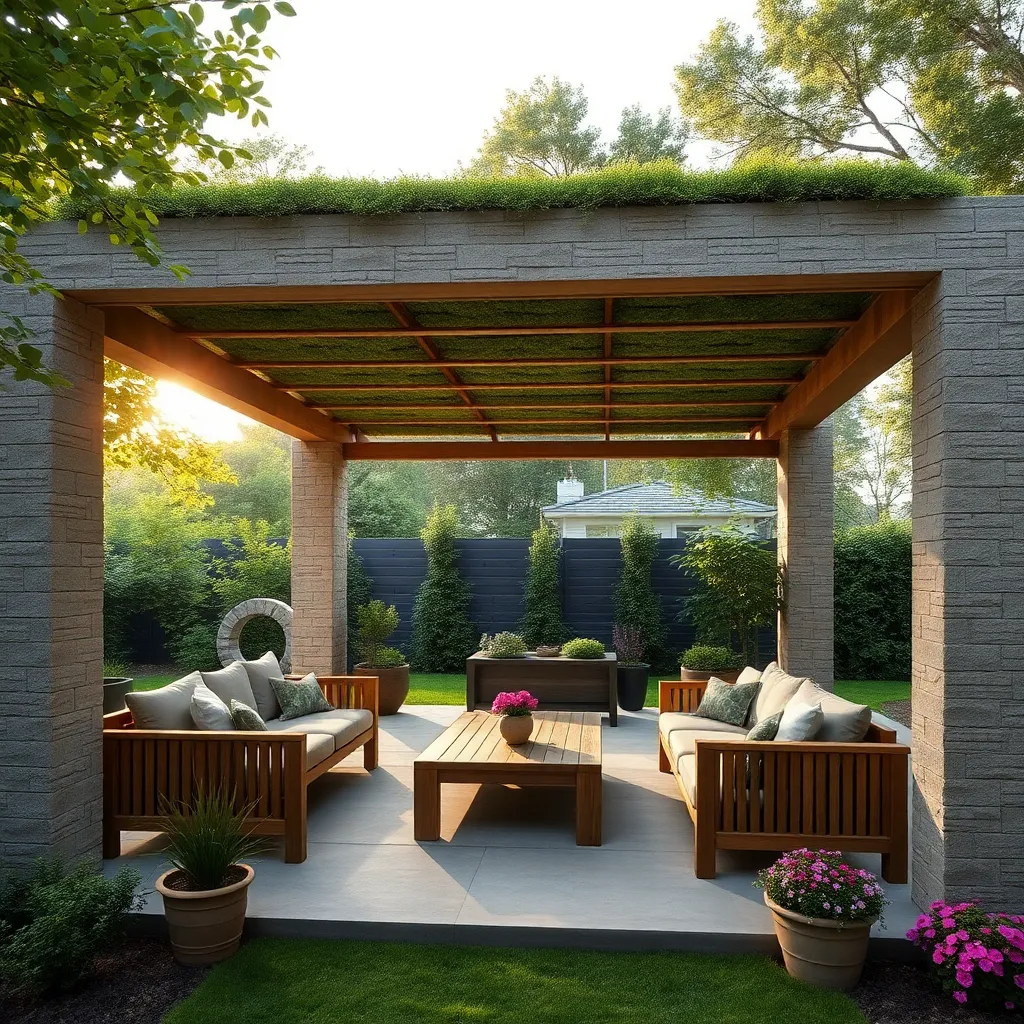
For an eco-friendly approach to building outdoor shelters, consider using earth-friendly concrete. This type of concrete incorporates recycled materials like fly ash or slag, reducing the reliance on traditional Portland cement. Choose a mix with a high fly ash content of around 30% to 40% for the best environmental impact. When designing your shelter, opt for a simple structure like a pergola or pavilion, using standard dimensions such as a 10×10 foot footprint to minimize waste and ensure efficient use of materials.
To enhance the sustainability of your construction, consider adding a green roof or solar panels to your concrete shelter. A green roof can be planted with native, drought-resistant plants, offering insulation and reducing stormwater runoff. For those with more experience, incorporate permeable concrete for flooring to facilitate natural water drainage.
- Ensure your concrete mix is locally sourced to reduce transportation-related emissions.
- Plan for efficient use of materials by consulting with a sustainable architect or builder.
These steps not only make your shelter eco-friendly but also enhance its functionality and aesthetic appeal.
Implement Natural Ventilation Techniques
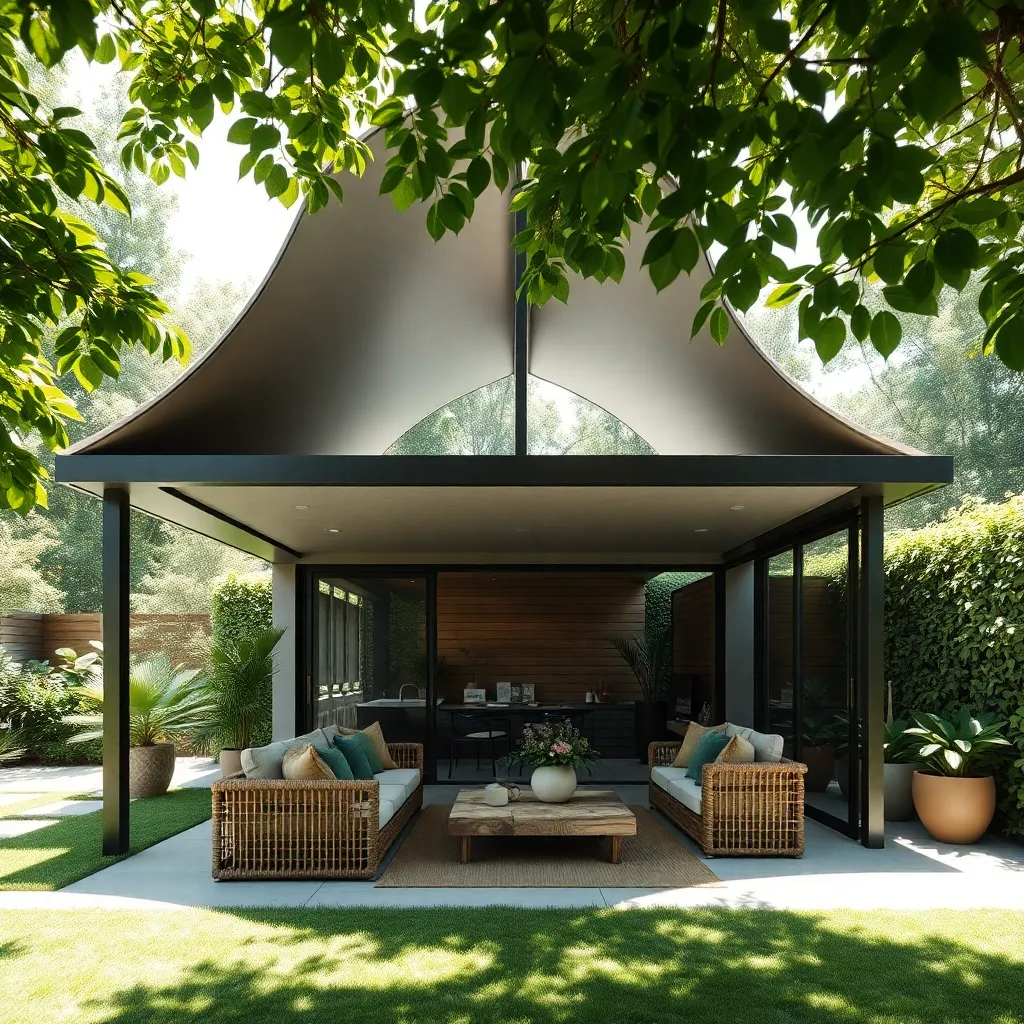
To optimize natural ventilation in your outdoor shelter, consider the strategic placement of openings like windows, vents, or latticework. Position these openings on opposite sides to create a cross-ventilation effect, allowing fresh air to flow freely and cool the space. Use materials such as bamboo or recycled wood slats to construct adjustable vents or shutters, which can be easily opened or closed to control airflow based on weather conditions.
For more advanced solutions, incorporate thermal chimney designs into your shelter. This involves creating a vertical structure that draws hot air upwards and out of the space, naturally pulling cooler air in from below. Utilize materials with high thermal mass, like stone or clay, to absorb and gradually release heat, enhancing the natural cooling effect. By combining these techniques, you can create a comfortable and eco-friendly outdoor environment that reduces reliance on artificial cooling methods.
Select Locally-Sourced Building Materials
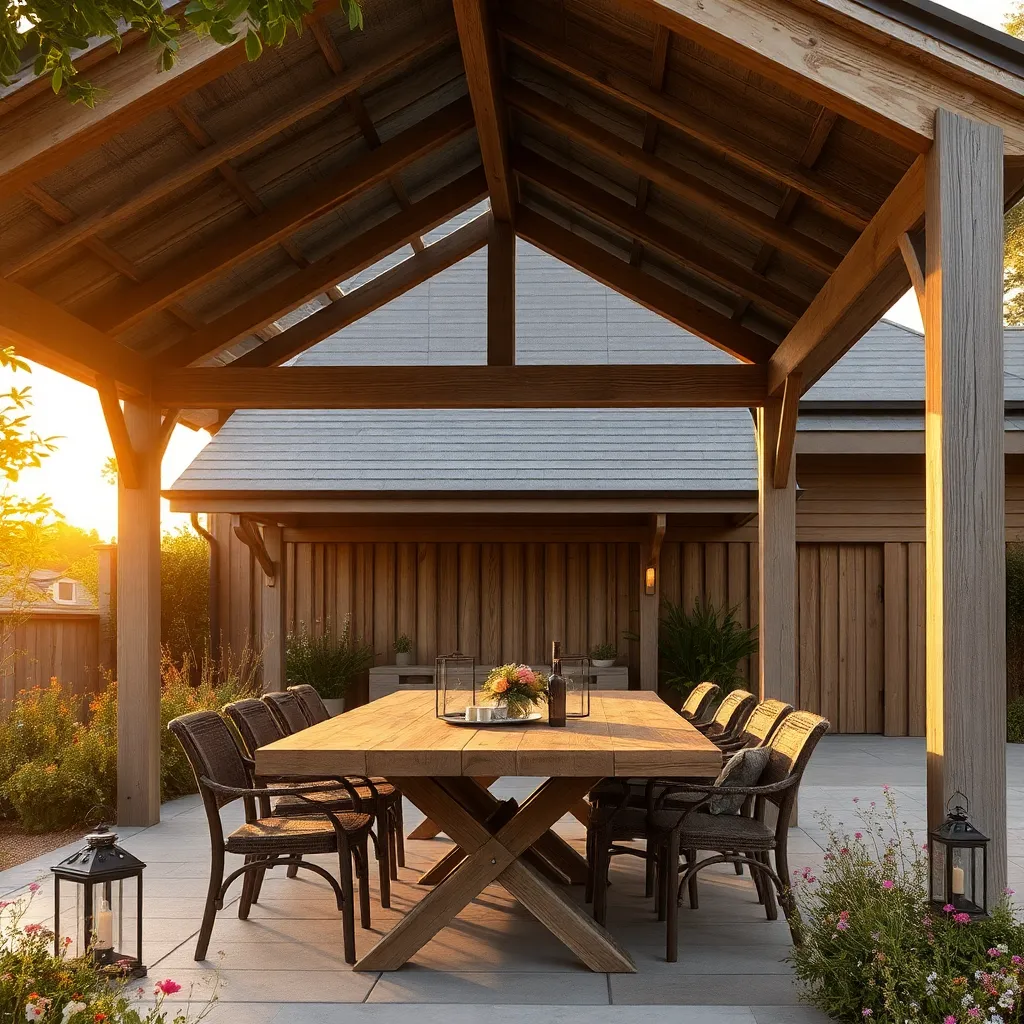
Using locally-sourced building materials for your outdoor shelter not only reduces your carbon footprint but also supports your local economy. Consider materials like reclaimed wood, natural stone, or bamboo, which are often readily available and require less transportation. For beginners, starting with simple structures like pergolas or arbors is a great way to incorporate these materials. Ensure you check local suppliers for unique options that suit your climate and aesthetic preferences.
For more experienced builders, explore advanced techniques such as using timber framing with locally-sourced lumber, which offers a sturdy and beautiful design. You can also consider using local clay for adobe structures, adding an earthy and natural feel to your yard. To maximize durability, make sure to treat wood with natural oils and finishes that withstand outdoor conditions. Always keep in mind that choosing local not only enhances the sustainability of your project but also enriches the character and authenticity of your outdoor space.
Conclusion: Creating Beautiful Outdoor Spaces
In exploring the harmonious blend of nature and sustainability, we’ve uncovered 12 innovative outdoor shelter ideas that not only enhance our eco-friendly yards but also nurture our relationships with the environment and each other. From living willow domes and recycled pallet gazebos to solar-powered pergolas and upcycled fabric canopies, each concept brings a unique opportunity to connect with loved ones while respecting our planet.
As your next step, choose one idea that resonates with your values and start planning how you can bring it to life in your own yard. Whether it’s building a simple bamboo teepee or creating a cozy space with natural shade sails, taking action today will create a greener tomorrow.
Bookmark this article as your go-to resource for sustainable inspiration, ensuring you have these thoughtful ideas at your fingertips whenever you’re ready to enhance your outdoor spaces further.
By integrating these eco-friendly shelters into your lifestyle, you are not only fostering a healthier relationship with the Earth but also paving the way for more meaningful connections in your personal life. Remember, every small step taken today contributes to the thriving relationships of tomorrow. Let’s build spaces that support both our planet and our bonds.

